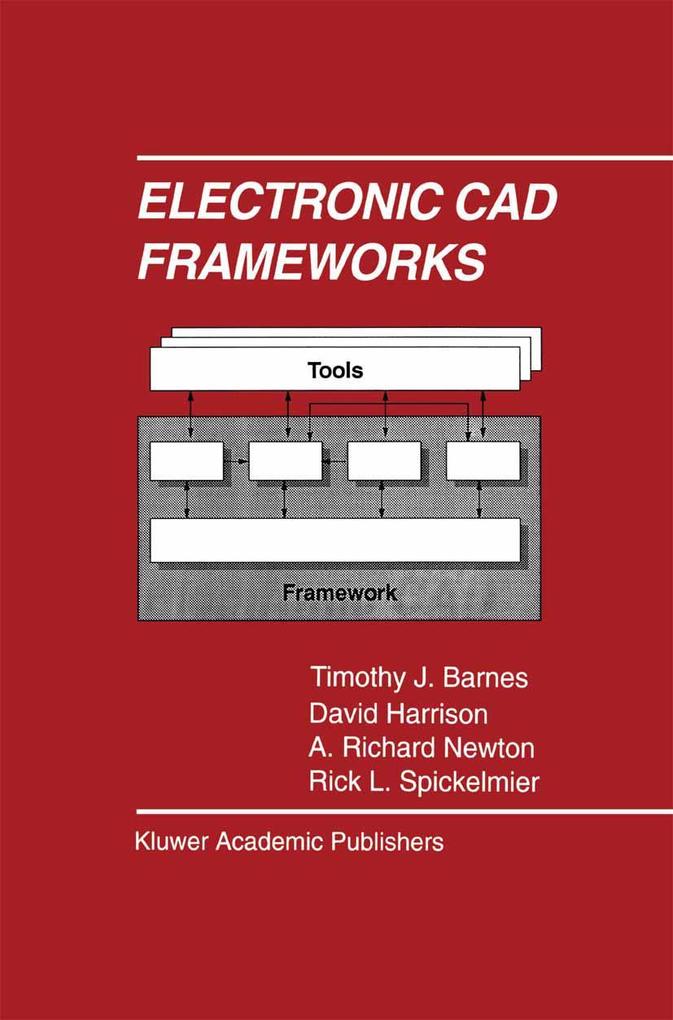
Zustellung: Fr, 25.07. - Di, 29.07.
Versand in 7 Tagen
VersandkostenfreiWhen it comes to frameworks, the familiar story of the elephant and the six blind philosophers seems to apply. As each philoso pher encountered a separate part of the elephant, each pronounced his considered, but flawed judgement. One blind philosopher felt a leg and thought it a tree. Another felt the tail and thought he held a rope. Another felt the elephant's flank and thought he stood before a wall. We're supposed to learn about snap judgements from this alle gory, but its author might well have been describing design automation frameworks. For in the reality of today's product development requirements, a framework must be many things to many people. xiv CAD Frameworks: Integration Technology for CAD As the authors of this book note, framework design is an optimi zation problem. Somehow, it has to be both a superior rope for one and a tremendous tree for another. Somehow it needs to provide a standard environment for exploiting the full potential of computer-aided engineering tools. And, somehow, it has to make real such abstractions as interoperability and interchangeability. For years, we've talked about a framework as something that provides application-oriented services, just as an operating system provides system-level support. And for years, that simple statement has hid the tremendous complexity of actually providing those services.
Inhaltsverzeichnis
1: Introdution. - 1. 1 The Nature of a CAD Framework. - 1. 2 The Evolution of CAD Frameworks. - 1. 3 CAD Frameworks and Openness. - 1. 4 The Rise of Commercial CAD Frameworks. - 1. 5 The Impact of Object-Oriented Techniques. - 1. 6 The Standardization of CAD Frameworks. - 1. 7 Organization of the Book. - 2: Major Components of an Engineering Framework. - 2. 1 Overview. - 2. 2 Operating System Services. - 2. 3 Tool Integration and Encapsulation. - 2. 4 Design Management. - 3: Data Representation. - 3. 1 Introduction. - 3. 2 Databases and Data Structures. - 3. 3 Approaches to CAD Databases. - 3. 4 Representational Issues. - 3. 5 The Nature of Engineering Design Information. - 3. 6 Hierarchy. - 4: Data Management. - 4. 1 Introduction. - 4. 2 Conventional Database Approaches. - 4. 3 Physical Versus Logical Data Management. - 4. 4 Managing the History of a Design. - 4. 5 Managing Multiple Users of the Data. - 4. 6 Concurrency Control. - 4. 7 Compatibility with Change. - 5: Tool Management. - 5. 1 Introduction. - 5. 2 Tool Characterization. - 5. 3 Tool Control. - 5. 4 Other Tool Management Functions. - 6: Design Flow Management. - 6. 1 Introduction. - 6. 2 Benefits. - 6. 3 DFM Dependencies. - 6. 4 Existing Approaches. - 6. 5 Describing the Design Flow. - 6. 6 The Design Flow Engine. - 6. 7 Standardization and Design Flow Management. - 7: User Interfaces. - 7. 1 Introduction. - 7. 2 History of Design Automation User Interface Systems. - 7. 3 Modern Framework User Interfaces. - 7. 4 Future Directions for CAD User Interfaces. - 8: Extension Languages. - 8. 1 Introduction. - 8. 2 Commercial Extension Languages in CAD. - 8. 3 Extension Languages Prototypes. - 8. 4 Extension Languages Requirements. - 8. 5 Design Issues for Extension Languages. - 8. 6 General Applications of Extension Languages. - 8. 7 Language-Based Design. - 8. 8 Benefits of an Extension Language. - 8. 9 Future Directions. - 9: Implementing a CAD Framework. - 9. 1 Introduction. - 9. 2 The CODEM Approach. - 9. 3 Commercial Frameworks. - 10: The CAD Framework Initiative. - 10. 1 Introduction. - 10. 2 The Origins of CFI. - 10. 3 Goals and Deliverables. - 10. 4 The CFI Organization. - 10. 5 Tangible and Intangible Benefits. - 10. 6 Technical Activities. - 10. 7 CFI in the Future. - 11: Summary. - 11. 1 Acknowledgments. - References.
Produktdetails
Erscheinungsdatum
30. Juni 1992
Sprache
englisch
Auflage
1992
Seitenanzahl
218
Reihe
The Springer International Series in Engineering and Computer Science
Autor/Autorin
Timothy J. Barnes, David Harrison, A. Richard Newton, Rick L. Spickelmier
Verlag/Hersteller
Produktart
gebunden
Abbildungen
XVII, 195 p.
Gewicht
497 g
Größe (L/B/H)
241/160/17 mm
ISBN
9780792392521
Bewertungen
0 Bewertungen
Es wurden noch keine Bewertungen abgegeben. Schreiben Sie die erste Bewertung zu "Electronic CAD Frameworks" und helfen Sie damit anderen bei der Kaufentscheidung.








